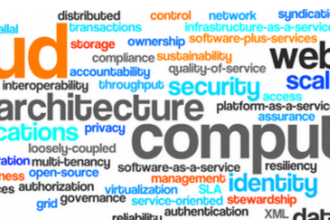Resilient IT teams are better capable of incorporating changes, they’re more flexible in the face of adversity, and they can achieve more and less time. Building a resilient IT team during an economic downturn seems like an impossible challenge, especially if you’re facing budget limitations and staffing shortages.
So, how can you approach it?
Building a More Resilient IT Team: Primary Goals
Resilience is an indispensable quality in almost any conceivable team, but it’s especially valuable in the IT department, when technologies are constantly evolving, new problems are constantly emerging, and your competitors are constantly looking for an edge.
The journey to building a more resilient IT team begins with setting and understanding your primary objectives. Usually, businesses focus on the following goals:
- Reduce costs. IT cost reduction strategies can dramatically reduce how much money you pay for IT systems and services, especially over the long term. When your team members are more resilient, they’re better at adapting to new circumstances, solving complex problems, and working to find the most efficient solutions for your IT needs; in other words, more resilient team members save you money.
- Develop resilient individuals. Implementing a philosophy of resilience is also about creating more resilient individuals to be part of your team. Resilient individuals are unshaken by challenges, their loyalty is difficult to break, and they make it easier for you to train and assimilate similarly resilient individuals into your team.
- Create backups and alternate paths. Resilience is also about being prepared for anything that comes your way in the future. In the IT department, that means creating backups, redundant systems, and alternate pathways you can tap into if and when necessary.
Strategies to Build a Resilient IT Team During an Economic Downturn
These are some of the most important strategies to help you build a resilient IT team during an economic downturn:
- Revisit your brand values and organizational culture. Take a moment to revisit your brand values and organizational culture. How is resilience represented here? If resilience is one of your most important core values, and it’s central to the organizational culture you’re trying to build, it would be much more likely to hire resilient candidates and push your existing team members toward an attitude of resilience.
- Hire wisely. When hiring new staff members for your IT team, pay close attention to the resilient traits they embody. Does this individual seem calm under pressure? Do they demonstrate a history of adapting to new circumstances? Are they able to think about problems on the fly?
- Encourage an entrepreneurial mentality. People with an entrepreneurial mindset are more likely to showcase resilience, so encourage that mentality among your IT staff members. Entrepreneurs are constantly looking for new ideas, they aren’t afraid to challenge the status quo, and they’re not afraid of failing. You can start fostering this mentality by offering rewards to employees who generate novel, valuable ideas.
- Build stronger team bonds. Cultivating resilience in an organization demands attention to each individual; ideally, every team member will have a philosophy of resilience that drives them. But resilience is also collective. To this end, it’s important to build stronger relationships and bonds within your teams, so the group can become better coordinated and more resilient.
- Avoid overcommitting to specific strategies. One of the core philosophies of resilience is free adaptability, but you can’t adapt readily if you’re overcommitted to a specific strategy. That’s why it’s important to avoid overcommitting to any systems, tools, or processes that could limit your flexibility in the future.
- Adopt hybrid and modular approaches. In line with this, it sometimes makes sense to adopt hybrid and modular approaches. This way, you can avoid going “all in” on any single strategy; and when it comes to modular approaches, you can freely drop any components that aren’t working.
- Be willing to experiment. Don’t be afraid to experiment, and encourage your IT staff members to experiment alongside you. Experimentation is the fastest way to learn what works and what doesn’t, so you can adapt intelligently.
- Trust objective data. Always trust the objective data related to your changes. Did you see a measurable increase in an important KPI after implementing your latest round of adaptive changes? Or did things remain relatively the same?
- Collect feedback and listen to it. Employee feedback is indispensable for creating a flexible and adaptable culture. What ideas do your employees have for changing or improving your current approach? Demonstrate resilience by listening to this feedback and incorporating it whenever it makes sense to do so.
Your IT team isn’t going to become resilient overnight. This is a process that typically takes many years, unfolding across many different modules and team members. Still, if you remain committed to the philosophy of resilience, it’s only a matter of time before you establish the adaptability mindset and actionable systems necessary to achieve it.








